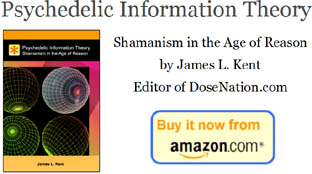A quick look at synesthesia
I came across this health story about synesthesia recently and was reminded.... well, I was reminded of several things that I'm not going to admit in front of a jury, but also, I was reminded of just how unusual the phenomenon actually is, and how some people have a permanent form of it:
Nineteen different combinations have been identified. But the combinations are almost limitless because a synesthete may have more than one form of the condition.
The most common form appears to be seeing colours in numbers and/or letters. This is called colour-language synesthesia. But other less common experiences are also possible. A synesthete may report that she feels piano music tickling her cheeks or that a person’s voice tastes like chutney.
In most cases, the sensation is triggered by external stimuli but in some cases it could be purely internal, such as associating the concept of a day or year with a sensory experience.
The sensory association is usually projected outside of the body, such as seeing the letter in colour, rather than in the mind’s eye.
This is probably one of the weirdest things in this report:
Synesthesia is a highly subjective, individualised experience. Colour-language synesthetes, for example, don’t agree on which colour goes with which number or letter. However, a remarkable number agree that the letter “o” is white.
At any rate, obviously this report came across my desk because of the requisite mention of how "antiserotonergic hallucinogens such as LSD and peyote" can cause it, but it's an interesting piece regardless, touching on the psychology of those who live with synesthesia and how they view themselves and the world.
|

Recently @ DoseNation
|
|





















The comments posted here do not reflect the views of the owners of this site.